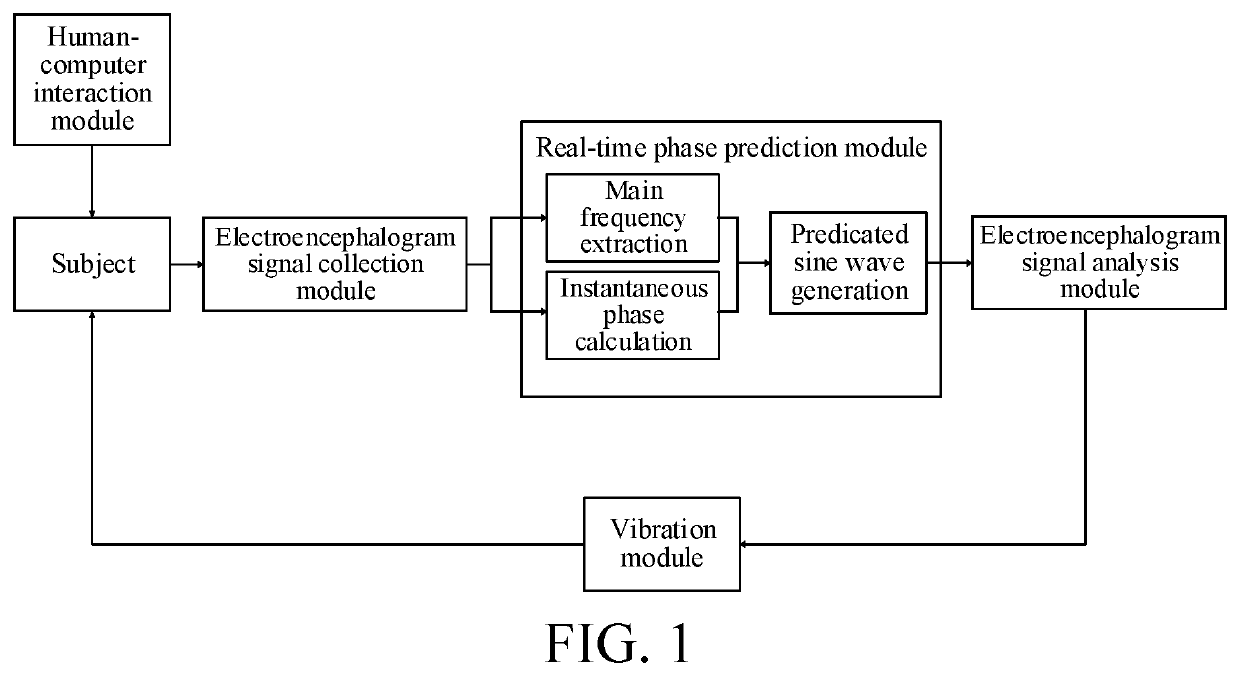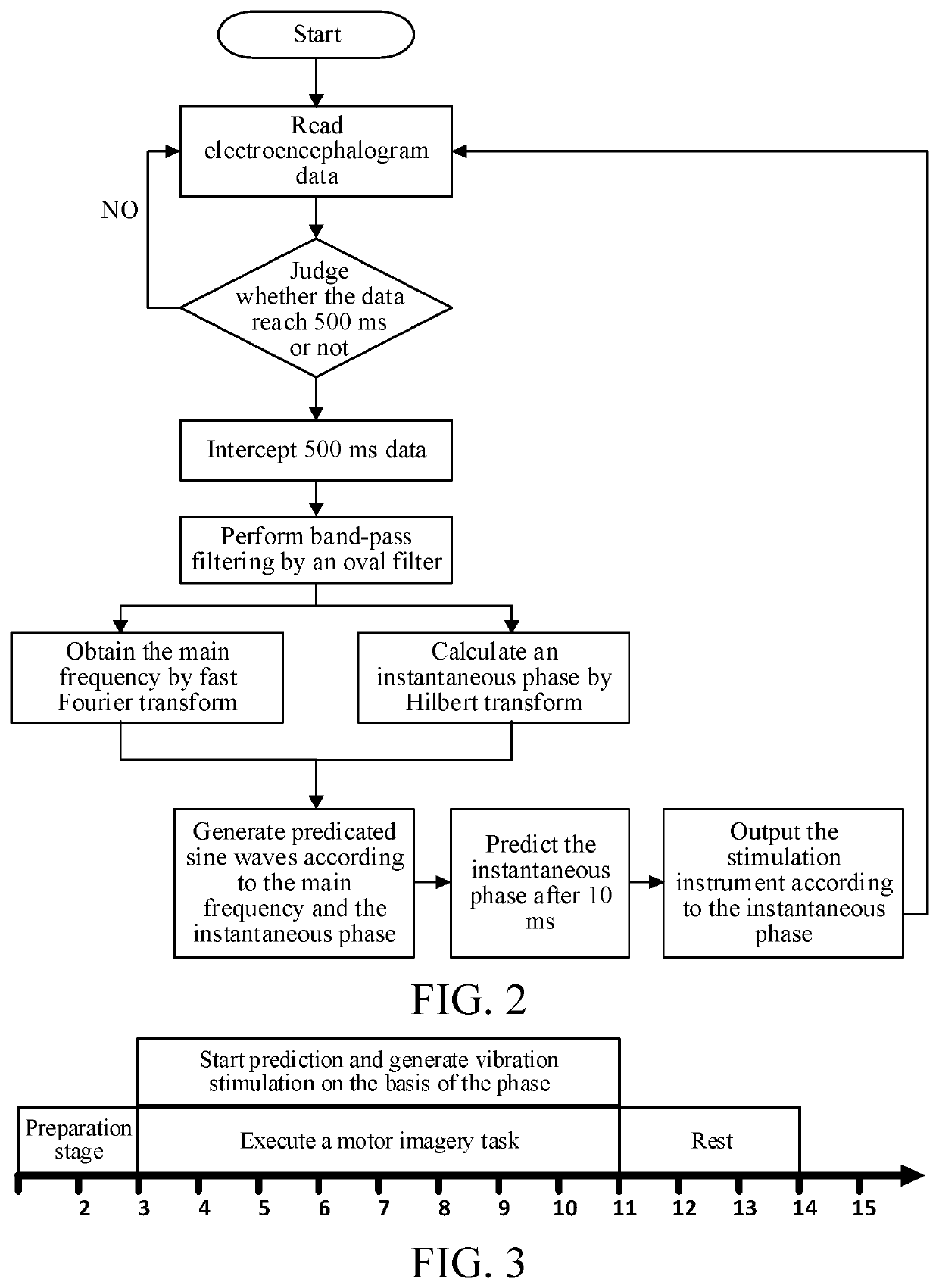Brain-computer interface method and system based on real-time closed loop vibration stimulation enhancement
- Summary
- Abstract
- Description
- Claims
- Application Information
AI Technical Summary
Benefits of technology
Problems solved by technology
Method used
Image
Examples
Embodiment Construction
[0035]Implementations of the present invention are described below with reference to the accompanying drawings of this specification.
[0036]As shown in FIG. 1, the present invention designs a brain-computer interface system based on real-time closed-loop vibration stimulation enhancement. The system mainly includes: a human-computer interaction module, an electroencephalogram signal collection module, a real-time phase prediction module, an electroencephalogram signal analysis module and a vibration stimulation feedback module. An output end of the electroencephalogram signal collection module is connected with an input end of the real-time phase prediction module. An output end of the real-time phase prediction module is connected with an input end of the electroencephalogram signal analysis module. An output end of the electroencephalogram signal analysis module is connected with the vibration stimulation feedback module. The vibration stimulation feedback module directly acts on t...
PUM
 Login to View More
Login to View More Abstract
Description
Claims
Application Information
 Login to View More
Login to View More - R&D
- Intellectual Property
- Life Sciences
- Materials
- Tech Scout
- Unparalleled Data Quality
- Higher Quality Content
- 60% Fewer Hallucinations
Browse by: Latest US Patents, China's latest patents, Technical Efficacy Thesaurus, Application Domain, Technology Topic, Popular Technical Reports.
© 2025 PatSnap. All rights reserved.Legal|Privacy policy|Modern Slavery Act Transparency Statement|Sitemap|About US| Contact US: help@patsnap.com


